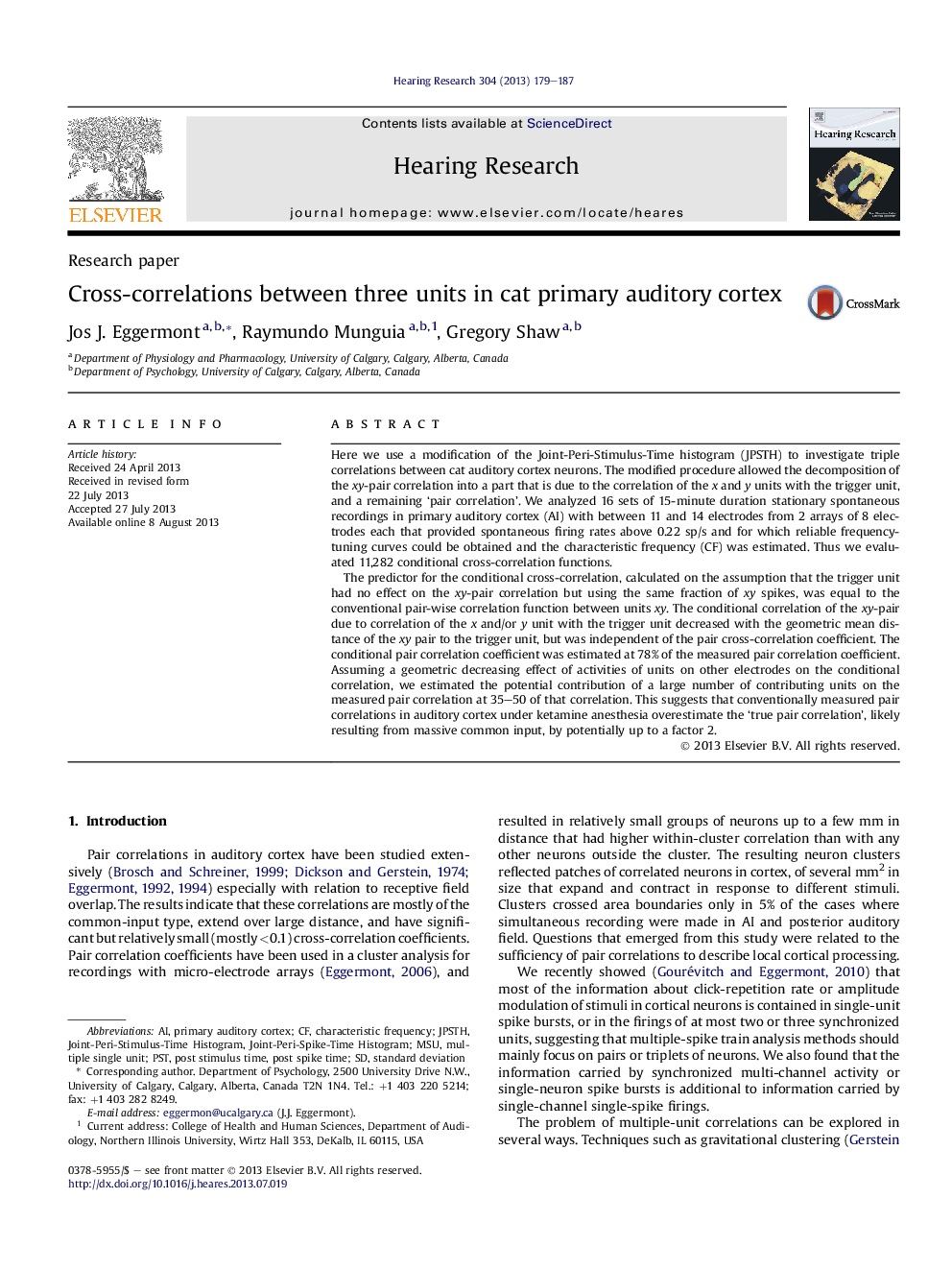| Article ID | Journal | Published Year | Pages | File Type |
|---|---|---|---|---|
| 6287507 | Hearing Research | 2013 | 9 Pages |
Abstract
The predictor for the conditional cross-correlation, calculated on the assumption that the trigger unit had no effect on the xy-pair correlation but using the same fraction of xy spikes, was equal to the conventional pair-wise correlation function between units xy. The conditional correlation of the xy-pair due to correlation of the x and/or y unit with the trigger unit decreased with the geometric mean distance of the xy pair to the trigger unit, but was independent of the pair cross-correlation coefficient. The conditional pair correlation coefficient was estimated at 78% of the measured pair correlation coefficient. Assuming a geometric decreasing effect of activities of units on other electrodes on the conditional correlation, we estimated the potential contribution of a large number of contributing units on the measured pair correlation at 35-50 of that correlation. This suggests that conventionally measured pair correlations in auditory cortex under ketamine anesthesia overestimate the 'true pair correlation', likely resulting from massive common input, by potentially up to a factor 2.
Keywords
Related Topics
Life Sciences
Neuroscience
Sensory Systems
Authors
Jos J. Eggermont, Raymundo Munguia, Gregory Shaw,
